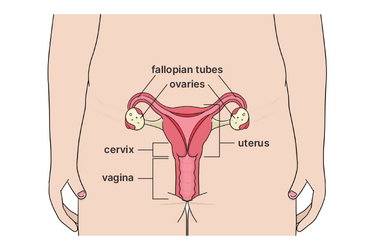On this page, you’ll find information about fallopian tube cancer, including the symptoms, causes and treatments.
What is fallopian tube cancer?
Symptoms of fallopian tube cancer
Causes of fallopian tube cancer
How is fallopian tube cancer diagnosed?
Treatments for fallopian tube cancer
When to see your doctor about fallopian tube cancer
Online resources about fallopian tube cancer
Fallopian tube cancer is a rare cancer affecting one or both fallopian tubes (the tubes that connect the ovaries to the uterus). This type of cancer is more common after menopause.
More than 95% of fallopian tube cancers grow in the cells that line the fallopian tubes. But sometimes the cancer can form in the smooth muscle of the fallopian tubes.

You might not have any symptoms of fallopian tube cancer, especially in the early stages. But symptoms can include:
Talk to your doctor if you are worried about any of these symptoms. They may not be due to cancer, but it’s important to check.
We don’t know the exact cause of fallopian tube cancer, but it may be associated with a family history of cancer, certain genetic conditions and other health factors.
Most cases of fallopian tube cancer are hard to detect during a physical examination, unless the cancer is advanced and can be felt as a mass. It can be difficult to differentiate between fallopian tube and ovarian cancers.
Fallopian tube cancer may be detected during tests for other conditions.
If you notice symptoms, see your doctor. They will ask questions about your symptoms, medical history and family health history. You may also need to have blood and urine (wee) tests.
If your examination and test results suggest you may have fallopian tube cancer, your doctor will refer you to a gynaecological oncologist (a specialist in gynaecological cancers) straight away.
You may need more tests to diagnose fallopian tube cancer. For example:
Treatment for fallopian cancer depends on the extent of the cancer. It may include:
Some cancer treatments, such as chemotherapy and radiotherapy, can cause menopause. Learn more about medically induced menopause.
It’s important to see your doctor if you notice any symptoms of fallopian tube cancer. As with many cancers, early detection leads to the best treatment outcomes.
For more information about fallopian tube cancer, visit:
If you would like to speak to a nurse for general information and support, call Cancer Council on 13 11 20 (9 am to 5pm, Monday to Friday).
This content has been reviewed by a group of medical subject matter experts, in accordance with Jean Hailes policy.
© Jean Hailes Foundation. All rights reserved.